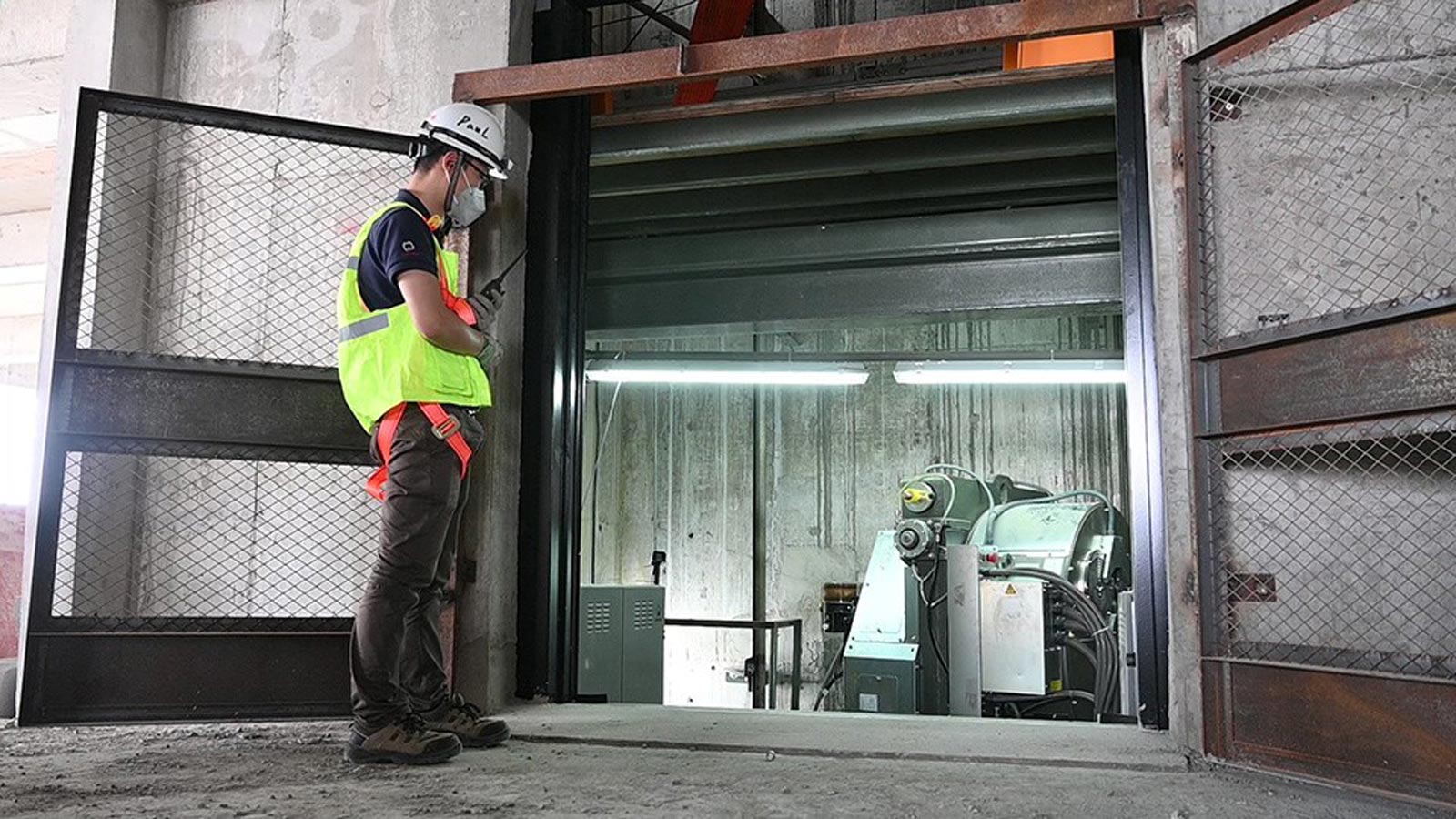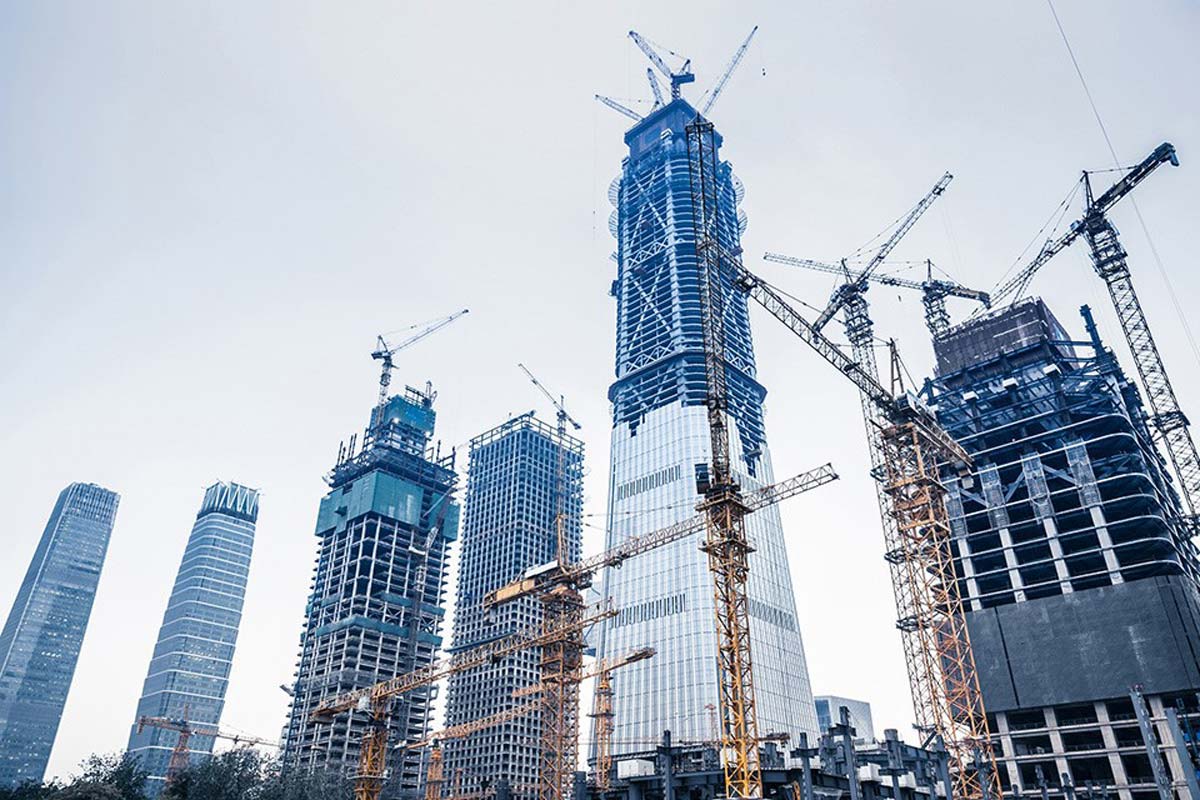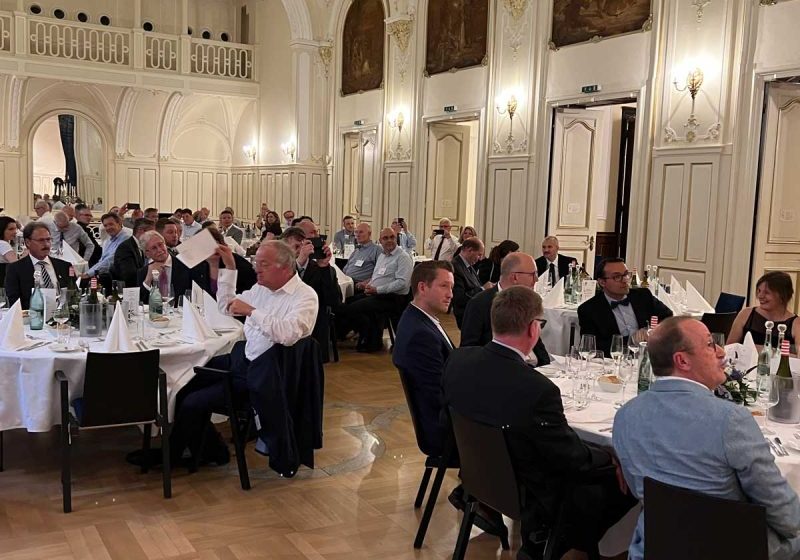Enhanced Self-Climbing VT System
Aug 6, 2022

Schindler CLIMB Lift adds models, design elements.
submitted by Schindler
photos courtesy of Schindler
Schindler has extended the compatibility of its CLIMB Lift from the larger Schindler 7000 elevator to the 5500, making it suitable for buildings of 150 m or less. The company also introduced a new design option that enables integration with the building formwork during construction and published data that illustrates the effectiveness of the technology, now more than 20 years old. Suitable for transporting people and goods, the self-climbing vertical-transportation (VT) system has so far been integrated with more than 170 elevators, with additional deliveries scheduled. The first delivery of a CLIMB Lift with the integrated option is to the David Chipperfield Architects-designed Elbtower in Hamburg, Germany, for which Schindler is providing 14 S7000 and 24 S5500 elevators.
The company observes CLIMB Lift results in increased speed and productivity on construction sites. “Not only does Schindler CLIMB Lift enable the earlier completion of work overall, but it allows the façade to be closed sooner during the construction phase,” Stefan Weber, Schindler head of large projects operations, said. “This allows developers to let space much earlier than would otherwise have been possible.”
The Schindler 5500 CLIMB Lift is designed for machine-room-less elevator systems. Based on the original 7000 CLIMB Lift design, the system boasts a simplified design that doesn’t require a lifting platform. The 5500 CLIMB Lift is light and easy to install, with a standardized design that helps make it a cost-effective solution.
For the formwork integration option, the lift platform and crash deck of the CLIMB Lift are integrated with the formwork, meaning the entire system stays closer to the top of the building as construction progresses. This integrated design also reduces components and other materials in the CLIMB Lift as it “jumps” from one floor to the next, making travel faster and easier.

The Schindler CLIMB Lift recently achieved EN 81-20 certification for Europe. A17.1 certification for the U.S. is expected to be completed in September.
Elaborating on the benefits of the Schindler CLIMB Lift, the company stated:
“We believe that cost savings achieved with Schindler CLIMB Lift could run as high as 5% of total building costs of a high-rise construction project. This accounts for savings in reduced manpower from shorter build times and earlier income generation for developers who can lease space sooner. This acceleration in leasing is possible because Schindler CLIMB Lift is an internal system, so the façade can be closed earlier in construction. This is not possible on projects implementing external hoists.
“Schindler CLIMB Lift sits inside a high-rise construction’s elevator shaft, so its effectiveness in moving people and materials is not dependent on the shape of the building. This also means that construction work can continue in any weather condition, again providing a benefit compared to external hoists.”
Get more of Elevator World. Sign up for our free e-newsletter.









